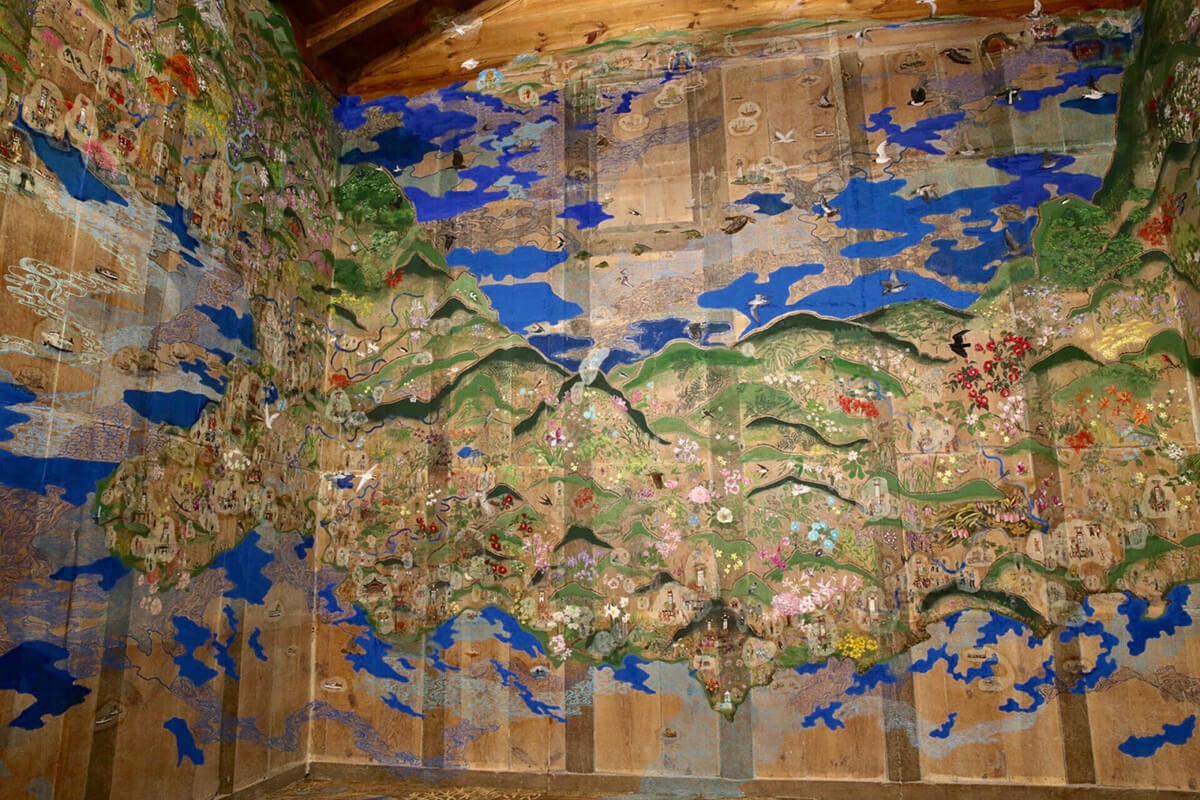A mixed team of professors, researchers and students created artworks through series of fieldwork and workshops at the old house built in the Meiji period
(1868-1912) and its courtyard. They included “The Oku-Noto Mandala”: a
large-scale mural featuring cultural exchanges between Suzu and the continent,
animals and plants, as well as stories told by the local people; “The Tree in the
House” combined colossal “objects” left in the old house to create a great
tree; “Diving into the House” was a noren (shop curtain) made of indigo-dyed
threads taken from fishing nets inviting viewers to go through into a deeper
space; and “Garden of Rice” showed a landscape of rice production.
Taking into account the histories and lives that were left behind on the site, the
team created a space where visitors could experience its multi-layered cultures.
A mixed team of professors, researchers and students created artworks through series of fieldwork and workshops at the old house built in the Meiji period (1868-1912) and its courtyard. They included “The Oku-Noto Mandala”: a large-scale mural featuring cultural exchanges between Suzu and the continent, animals and plants, as well as stories told by the local people; “The Tree in the House” combined colossal “objects” left in the old house to create a great tree; “Diving into the House” was a noren (shop curtain) made of indigo-dyed threads taken from fishing nets inviting viewers to go through into a deeper space; and “Garden of Rice” showed a landscape of rice production. Taking into account the histories and lives that were left behind on the site, the team created a space where visitors could experience its multi-layered cultures.

